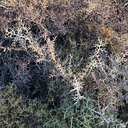Crowdsourcing and collaborative mapping
Crowdsourcing and participatory citizen projects
It has been several decades since citizens have been participating in mapping challenges, to name but a few, OSM, HOT, iNaturalist, Zooniverse. In our recent work we explored how participatory geo-localisation of biodiversity in cities can bring new perspectives of citizens’ contributions to city projects [1].
Using the open iNaturalist API we have collected the data. This project has been part of Correlaid (Germany) and CorrelaidX (France) data-volunteering project together with CRI (France) and UCL (UK).
The main questions we are interested in here are
- how to foster collaborative work by citizen science community to work across different cities?
- what are the common patterns across the globe, and what are the drivers for CS communities?
We are generally also interested in citizen science projects formation and institutionalization of semi-digital formats: self-organization vs.guided projects: interviews, patterns, community detection which we study in the recent publication https://arxiv.org/abs/2112.02693
For creation and experimentation with collaborative tools we are discussing with AINO.world on design of tools for analysis and visualization of geo-localized activities are needed. Therefore collaboration with Aino.world was so interesting and important.
Data from open API of inaturalist.org platform is of the following format and partially some example data is located in our github https://github.com/correlaid-paris/citizen_science_inaturalist :
Collaborative mapping
There is an important added value by collaborative mapping. Overall tools such as collaborative mapping (mapping of stakeholders, resources relocation etc.) can be a valuable tool for a variety of environmental design projects. It can be used to gather data and input from stakeholders, engage the public in decision-making processes, and create a shared understanding of a project’s goals and outcomes.
Read more about the collaborative mapping in our future posts with Aino Team.
